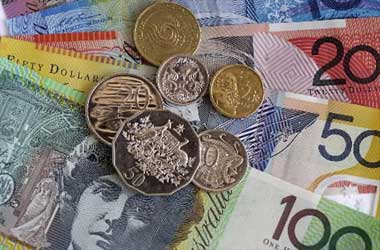 The Bank of Canada, following the monetary policy meeting, announced its decision to hold the interest rates unaltered at 0.25%, as anticipated by economists.
The Bank of Canada, following the monetary policy meeting, announced its decision to hold the interest rates unaltered at 0.25%, as anticipated by economists.
The Monetary Policy Committee (MPC) also stated that it will carry on with its quantitative easing program, implying purchase of at least C$5 billion worth government bonds every week will be continued.
The member of the MPC also pointed out that the Canadian economy is showing signs of rebound against the backdrop of relaxing of Covid-19 related prohibitions.
The central bank anticipates the economy to recover slowly as the pandemic continues to have a negative impact on consumer confidence and way of life.
Policymakers also forecast the country’s economy to contract by 7.8% in 2020 and records growth of 5.1% in 2021 and 3.7% in 2022. The Committee further stated that it has decided to offer additional monetary stimulus as required to back the recovery and attain the inflation target.
Investors’ sentiment got lifted after reports indicated that Moderna Inc’s potential Covid-19 drug generated antibodies in all patients who had signed up for initial human safety trial. With respect to economic data, Canada’s manufacturing sales increased to a record 10.7% in May, reversing from a 27.9% slump in April as several industries restarted operations following Covid-19 pandemic related lockdowns.
Manufacturing sales in Canada surged 10.7% m-o-m to C$40.20 billion in May, following a downwardly amended record 27.9% decline in the earlier month and surpassing market anticipations for a 9.5% increase. It was the largest increase in manufacturing sales as several manufacturers’ restarted operations following total or partial shutdowns associated with Covid-19 in April. Sales rose in 18 out of 21 industrial sectors, with transport machinery recorded a remarkable growth of 81.7%. Even printing, furniture and clothing recorded a growth of 91.6%, 89.6% and 90.4%.
The New York Empire State Manufacturing Index surged to 17.20 in July, from -0.20 in the earlier month and surpassing economists’ forecasts of 10. The reading signaled the first growth in business activity in New York since the outbreak of Covid-19 pandemic and the highest since November 2018. Fresh orders grew 13.9% in July, compared with -0.6% in June. Shipments also rose by 18.5%, from 3.3% in the earlier month.
Export prices in the US increased 1.4% m-o-m in June, following a downwardly amended 0.4% increase in May and greater than market anticipations for a 0.8% growth. It was the greatest increase in export prices since March 2011.
Total industrial production in the US grew 5.4% m-o-m in June, following a 1.4% increase in May, surpassing market anticipations for a 4.3% growth. It was the largest increase in industrial production since December 1959 as several companies restarted operations after Covid-19 related prohibitions. Manufacturing output increased 7.2%, but 11.1% below the pre-pandemic February level.
While motor vehicles and spare parts recorded 105% growth, factory production increased 3.9%. Additionally, utilities output increased 4.2%, as both gas and electric utilities recorded gains, while mining output declined 2.9%, with contraction in almost all business categories. For 2Q20, on annual basis, industrial output decreased 42.6%, reflecting the largest quarterly decline since the weakening of industrial sector after World War II.
Also, in the US, Capacity utilization increased to 68.6% in June 2020, from 64.8% in the earlier month, and higher than Consensus estimates of 67.7%. Despite the improvement, capacity utilization rate is 11.2% below its long-term (1972-2019 period) average of 80.10, but 1.9% above the low recorded during Great Recession as several industries have restarted operations following shutdowns related to coronavirus pandemic.




